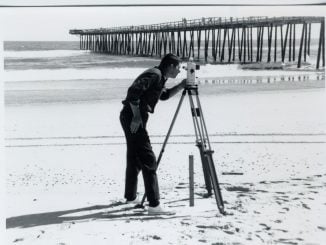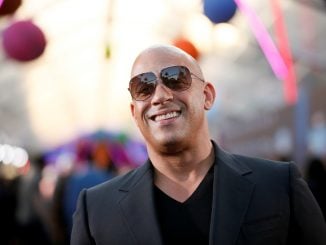LOS ANGELES — In superhero movies, sheer lively deliver-the-goods competence can be a quality you’re grateful for — or one that seems awesomely innocuous. In “Justice League,” it’s a little of both. The film is the definition of an adequate high-spirited studio lark: no more, no less. If fans get excited about it, that may mostly be because they’re excited about getting excited. Yet the movie is no cheat. It’s a tasty franchise delivery system that kicks a certain series back into gear.
A year and a half ago, “Batman v Superman: Dawn of Justice” wasn’t just a disappointing superhero movie. It became a meme, the new symbol of everything that could go wrong in a Hollywood comic book spectacle. It was ponderous and inflated, its logic didn’t parse, it had a Batman whose husky glower made him seem a stand-in for other (better) Batmans, it had a villain who was a jittery basket-case cliché — and more than that, it oozed the kind of solemnly overripe “darkness” that was meant to signify integrity but was, in fact, laid on with a corporate trowel. Kiss of death: The movie underperformed at the box office.
It should be noted that the meme was overstated. “Batman v Superman” was written off as a commercial disappointment when, in fact, it did just fine. (Ditto for “Suicide Squad,” the lousy superhero movie that saved August.) And some of us believed that the crucifying of “B v S” was a bit extreme; I liked the film’s first half (before it went off the rails), and thought that the malevolent-Superman plot resulted in Henry Cavill giving his first wide-awake screen performance. The meme, however, became a myth, and you’d better believe that the studio gods paid attention.

“Justice League” gathers up half a dozen comic-book immortals and lets them butt heads on their way to kicking ass while never getting messy or bombastic. It’s light and clean and simple (at times almost too simple), with razory repartee and combat duels that make a point of not going on for too long. The villain, far from being one of those hammy Method crackpots, is a sternly old-school CGI medieval warrior with devil-ram horns and an electro-bass Vader voice (provided by Ciaran Hinds) whose name is Steppenwolf. He made his first appearance in the comics in 1972 but could just as well have been dreamed up by a slumming video game designer after a night of no sleep.
The director, once again, is Zack Snyder, though Snyder parted ways with the project in March following the tragic suicide of his daughter. About four-fifths of principal photography had been completed, and the post-production process (including the rest of shooting) was overseen by Joss Whedon — a perfect choice, though a rather ironic one given that Whedon’s “Avengers” series competes directly with this one.
“Justice League” is seamless enough that it’s hard to say where one filmmaker leaves off and the other begins. But the film’s flavor tilts more toward Whedon than Snyder, whose pop grandiosity is radically played down. Every moment feels like it’s been test-driven for our pleasure. As a piece of product, “Justice League” is “superior” to “Batman v Superman,” but it’s also about as close to generic as a sharp-witted, high-octane comic book movie can get. There’s hardly a trope in it you haven’t seen before.
Ben Affleck surely approached this film knowing that a lot of people hated his debut as the Caped Crusader, which placed him in a tough spot. And so — like almost everything else in “Justice League” — he treads a careful middle ground. He plays Bruce/Batman with a restrained version of the Gruff Whisper and goes through the paces of bruiser antihero flippancy in a way that’s just understated enough to get by. It helps that he gets to engage in flirtatious sparring with Gal Gadot, who builds on her star-making performance in “Wonder Woman” by giving Diana Prince a glow of molten fury that burns even more brightly than before.
Snyder, as always, does tasty opening credits, setting a tableau of criminal hijinks to a soft-rock rendition of Leonard Cohen’s “Everybody Knows,” all as a way of dramatizing how badly America has been doing since Superman was killed. From there, it’s on to Batman fighting off a winged hissy alien metallic beastie — it turns out to be one of Steppenwolf’s army of Parademons — and Wonder Woman foiling a terrorist attack by slowing herself down to bullet time to knock away dozens of shots, as Gadot maintains her rock-steady killer gaze.
Now that Superman is no longer around, it’s fallen to these two to assemble a league of superheroes, even if, by now, we’ve been through these ritual assemblages once too often — in the “Avengers” and “X-Men” films, in “Guardians of the Galaxy” and “Thor: Ragnarok,” you name it. My own bias is that there tends to be a more-is-less quality to movies about superhero teams. It’s almost a law of physics: If any one of these folks is so amaze-worthy, then why do we need six? (They slice up the pie chart of invincibility.) That said, “Justice League” lets each of its characters carve out a crafty FX space in which to nurture his or her own ultimate ability.
There’s Cyborg (Ray Fisher), the haunted man-machine, a former athlete who was rebuilt by his father (Joe Morton) after an accident into a cybernetic weapon with a glowing red computer eye. But is he still at all human? There’s Aquaman (Jason Momoa), the tattooed Neptune with attitude who’s an amphibious master of the oceans, as well as the group’s token rock ’n’ roll roughneck bro. And there’s The Flash, who can move at lightning speed, and I’m not just talking about the jaw-dropping timing of Ezra Miller’s snappy rejoinders. “Justice League” throws off steady sparks of insult comedy (Aquaman: “You really are out of your mind.” Batman: “I’m not the one who brought a pitchfork”), kicking the movie along even when nothing of overwhelming import is happening.
The movie also features … how, exactly, should I put this? … the name of Henry Cavill up front in the opening credits. That might, of course, be an indication that Superman, who’s officially deceased, appears in prominent flashback. But the nudged casket at the end of “Batman v Superman” suggested an alternate scenario, and by the end of “Justice League” you’ll be grateful, indeed, that Cavill is in the movie. It needs every inch of his square-jawed stud-demigod command.
Steppenwolf, who threatens to achieve total dominion over everyplace and everyone, has gathered three ancient boxes of pulsating energy known as Mother Boxes, and I will spare you their complicated and meaningful backstory to just say: They are boxes. Bursting with light. And great power. It all plays as more than a bit arbitrary, given that their power, like Steppenwolf’s, is metaphysical, while the climactic battle is rooted in the corporeal — lots of gut punches and swinging broadswords. How does one defeat the other? The same way that everything else happens in a movie like “Justice League”: by looking fierce and staying with the program.



